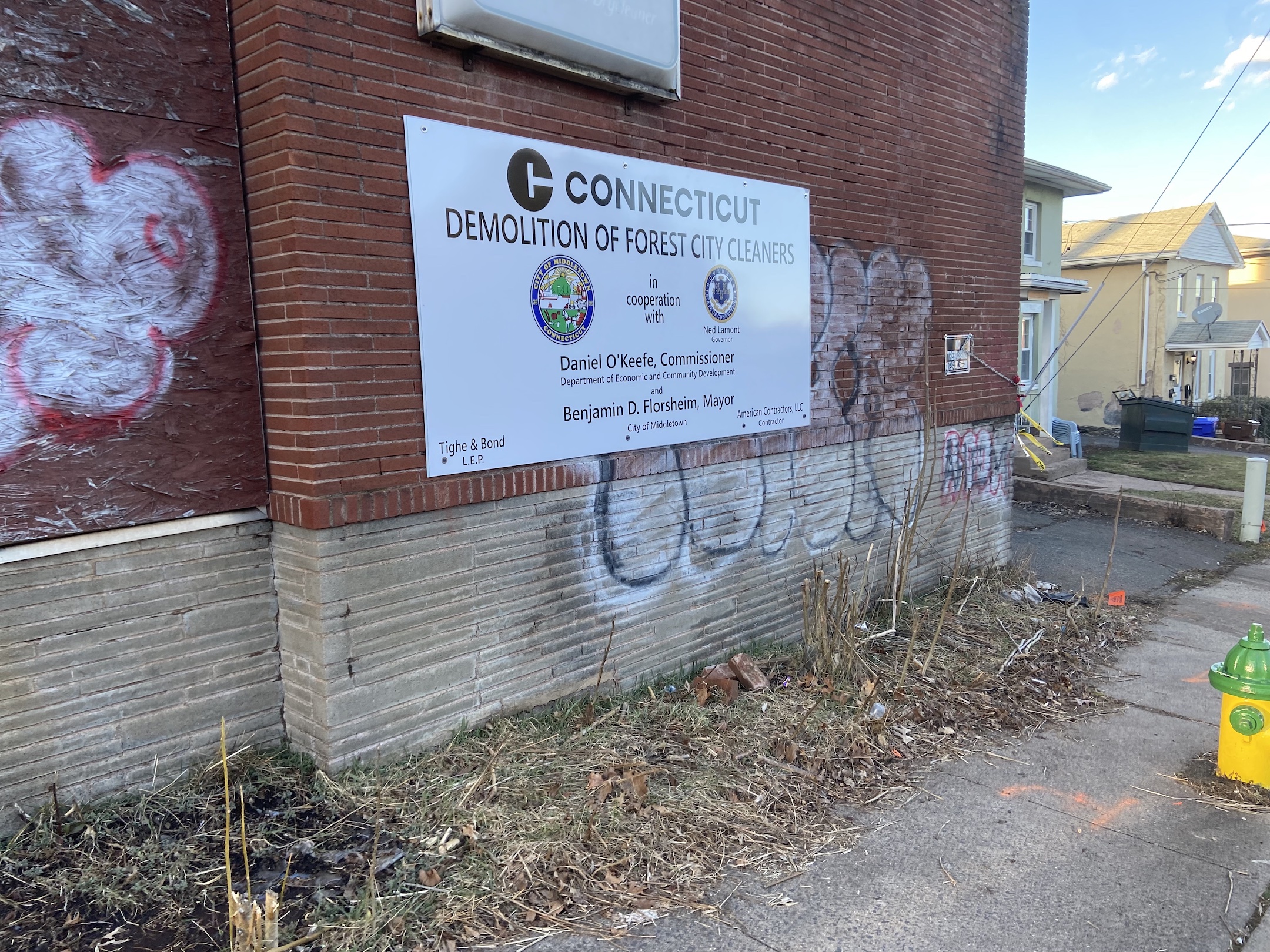
c/o Spencer Landers
The City of Middletown demolished the former home of Forest City Cleaners at 248 William St. last month, ending a years-long ordeal for the city and the University. The building, which closed in 2008 and has since been abandoned, was highly contaminated with chemicals from the former laundromat and will now become paid parking.
The dry cleaner began its operations in the early 20th century, while the structure itself was built in 1921. It was long a Middletown institution prior to its closing.
“They actually started on Main Street, I’m told, and moved up to that facility [on William St.], but they used to deliver dry cleaning on horseback,” Middletown Director of Economic and Community Development Christine Marques said. “And they were actually using white gasoline for dry cleaning chemicals at one time, that’s how far back it goes. That’s before they actually developed dry cleaning chemical materials.”
Since its abandonment, the building became dilapidated and continued to be a hazard for residents and students walking down William St. Despite this, the operation of tearing down the structure was a prolonged one.
“The process has been lengthy, in a word,” Middletown Mayor Benjamin Florsheim ’14 said. “I went to Wesleyan from 2010 to 2014. It was there that whole time. I remember walking by, a couple years, just about every day.”
The University promoted the demolition of the building as well because of its geographical closeness to main areas of campus.
“We’ve been asking them to demolish it for years,” President Michael Roth ’78 said. “It was becoming dangerous, it was an eyesore…and so we were cheering them on, so the building would be gone.”
Because the abandoned building was a brownfield site—land that could not be used due to high levels of contamination—the process of tearing down the building was lengthy. Middletown had to secure state and federal funding to pay for the demolition and cleanup that was necessary to make the land usable. The city received a $100,000 grant from the Connecticut Department of Energy & Environmental Protection, and also got money from the state’s Department of Economic and Community Development.
“It’s been a long process working with the State of Connecticut brownfield office to get the funding in place to get the cleanup done,” Florsheim said. “Very sensitive, hazardous materials cleanup that needed to happen in order to get the demolition underway.”
The demolition of the building cleared the way for more thorough testing for contaminants.
“This so happened to be an EPA [Brownfield] Assessment Grant,” Marques said. “[This functioned] to characterize the contamination, to figure out what you can do with [the site] afterwards, how you could redevelop it, and what the remediation would be. That’s where we are right now. We took down the building because it became very dangerous and we couldn’t sample enough that we needed to sample, so we’ve done that with the building now so that we can continue to categorize the contaminants.”
The site will likely become a paid parking lot due to the contamination.
“There maybe would be potentially better uses of that site, if it were just…a clean site that we could work with Wesleyan on or work with a private developer on or otherwise turn into some kind of public space,” Florsheim said. “But [making it a] parking lot enables us to cap the contamination, use it in a way that is still productive and that does, frankly, meet a need that exists in that area, where there’s limited parking available for a lot of the faculty and students and other folks who are parking up there.”
The city is also exploring other improvements to William Street. The road, which runs from High Street to Main Street before becoming Dr. Martin Luther King Jr. Way, is seen as a passageway between the University’s campus and Middletown, as it goes from the heart of campus down to Traverse Square and other Housing Authority properties.
“We’re looking [to make it] more pedestrian-friendly and more pleasant to walk down that street, and [adding] signage and wayfinding and things like that, just enhanced pedestrian user experience basically,” Marques said.
The site is still undergoing testing and has yet to be developed for future usage. Still, the city and the University are glad to see the former dry cleaner finally gone.
“I’m happy that the building is down, because I’d never never thought I’d see the day after a while,” Florsheim said.
Roth shared the mayor’s sentiment.
“Happy to see it go,” Roth said.
Spencer Landers can be reached at sklanders@wesleyan.edu.